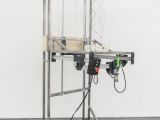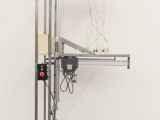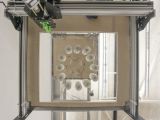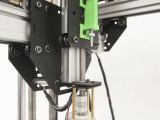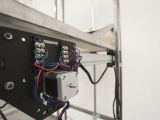3D printers have made great strides in terms of material support. We've got plastic-based ones (most of them are like this), others that can make stuff out of food, metal 3D printers, and even wood-based filament. Now, you can add textiles to the list.
A pair of students from the California College of the Arts in San Francisco might have created the last element needed for the achievement of high-tech clothes.
Seeing that 3D printing technology is expected to play a central role in human civilization from now on, they decided to combine it with something that was similarly revolutionary: the automated weaving loom.
Automated textile manufacturing was one of the hugest advancements of the industrial revolution. The world has come far since it started weaving cotton, but the underlying principles haven't changed.
What the two students did was enable their new weaving machine to create woven structures in three dimensions.
Behold the Space Weaver
For once, the word “space” doesn't refer to outer space or anything related to astronomy and NASA. Instead, it refers to the space taken up by the weaved object, since it's not just a flat plane anymore.
A three-axis gantry with an overhead mount or bridge support system produces woven forms much like a 3D printed builds items through Fused Deposition Modeling (FDM).
The frame measures 84 x 32 x 28 inches / 2 x 0.8 x 0.7 meters and is made of square tube carbon steel, with 1-inch / 25 mm flat bar mounting tabs. The print bed is of 17.5 x 19.5 inches / 444 x 495 mm.
Lots of research into CNC machines was done before the final design was reached, and it took five stepper motors for everything to work as intended, plus a Synthetos V8 TinyG and a 24V 6.35 power supply to drive them. A laser-cut acrylic case holds and protects the electric parts.
A remote-control emergency stop switch is included, but if you build the loom properly, it shouldn't be needed.
The spools caused a few headaches as well, since tension had to be reduced during the weaving – printing process repeatedly. Eventually, the spools were 3D printed themselves, from PLA.
As for software, the students had to create a programming method to translate spool movement into woven forms, even though the stepper motors are actually controlled by sending the G-code to the TinyG from Grasshopper/Firefly free plug-ins for Rhino.
The bonding agent
Yes, in the end, this wasn't a purely textile-based solution. The Space Weaver coats the fibers of the woven structure (DIA fiberglass thread and 3K twisted carbon fiber tow) with CA Super Glue. Altogether, the development process took 8 weeks, which was a pretty short time. The instructions to make your own are on Instructables.
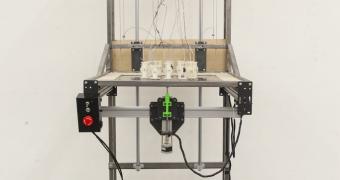
 14 DAY TRIAL //
14 DAY TRIAL // 
